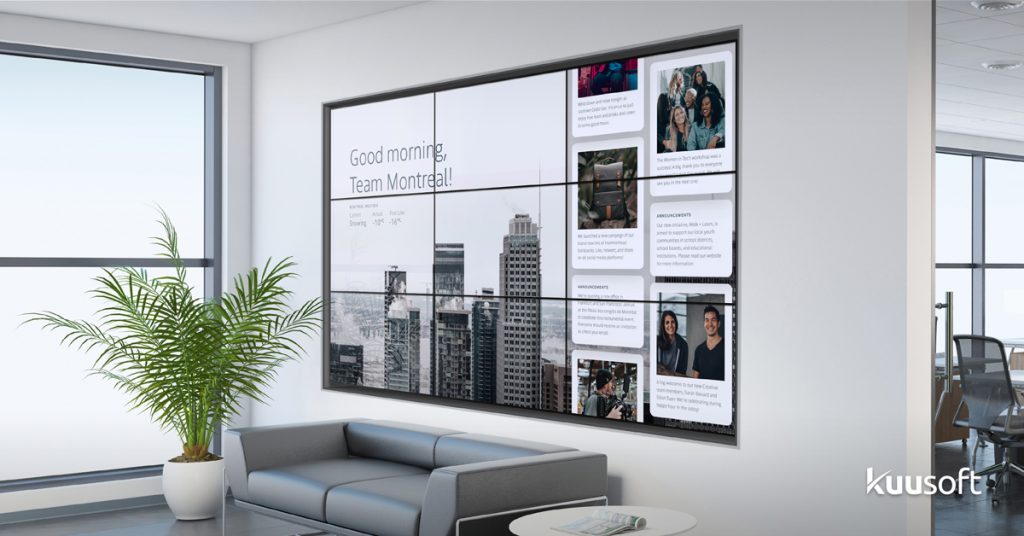
In a world saturated with information, capturing and maintaining the attention of customers and clients is more challenging than ever. Sometimes, the best strategy is to go big and bold; for that, when it comes to digital signage, there is nothing better than a video wall.
These large-scale digital displays, which seamlessly combine multiple screens, create an eye-catching, immersive digital experience that can lead to a new level of engagement in nearly any location.
Applications Across Industries
The flexibility of video walls makes them the perfect choice for a business looking to engage with customers. Here are some of the many examples where video walls are beneficial.
Example:

Video walls give brick-and-mortar retail stores the opportunity to showcase their offerings in stunning detail and clarity. The right digital signage allows sellers to reach customers in ways that go beyond just featuring products on shelves and racks.
Example:

On the other hand, corporate offices use video walls to engage both with employees and clients. This type of digital signage can be used to share company news, team achievements, and more to strengthen brand identity.
With the increasing popularity of video walls and technological advances, there are more options than ever. A general understanding of the unique pieces of a video wall installation can help you select the proper setup for your current and future needs. The 3 major components to consider are the display types, software, and installation.
Understanding Video Wall Technology
Video walls are a type of digital signage created by combining multiple digital display panels to form one large, seamless screen. Most modern video walls are composed of one of two types of digital display panels: LCD (Liquid Crystal Display) or LED (Light Emitting Diode) panels, each with unique benefits and applications.

LCD Video Walls
LCD panels are known for their high-quality visuals and cost-effectiveness. They typically require a lower upfront cost due to being longer on the market than other options and being widely available. Plus, the low energy consumption of modern LCD panels keeps the costs down in the long run.
LED Video Walls
LED panels are becoming increasingly popular for video walls mainly due to their superior brightness and contrast, as well as their durability. These features make them ideal for creating video walls both indoors and outdoors. As their popularity grows, more options like Organic LED (OLED) and microLED have emerged. These new choices offer improved color and brightness, though at a higher cost.
Selecting Digital Signage Software
While choosing the right hardware panels for a video wall is important, the digital signage software is what enables you to deliver high-quality content. The right software allows you to create, schedule, and deploy content across multiple digital displays.
3 considerations when selecting digital signage software for your video wall:
- Type of Content: Video wall content can vary from simple static images to full-motion video. Be sure you find software that can handle the different types of content you want to display.
- Number of Installations: Some software is designed for a single video wall, while others can handle multiple installations across a large campus or even in multiple locations.
- Scheduling Needs: A video wall can display the same content that may need to be refreshed in the future. Some situations may call for dynamic schedules that show the right content on the right screens at the right time.
Finding the Perfect Mount
There are mounting options for nearly any setting and need. Digital signage can be placed on a typical wall, ceiling-mounted, or even on custom-built structures. However, video walls are commonly wall mounted. While most wall-mounting solutions may look the same, they are not.

Modern professional wall-mounting systems have features that will save you the hassle down the road. For example, features that allow for easy adjustments and the ability to access or replace individual panels when needed.
You can learn more about NexSigns’ Digital Signage solution and connect with us on Facebook, LinkedIn, X, and YouTube to get the latest info on digital signage!





